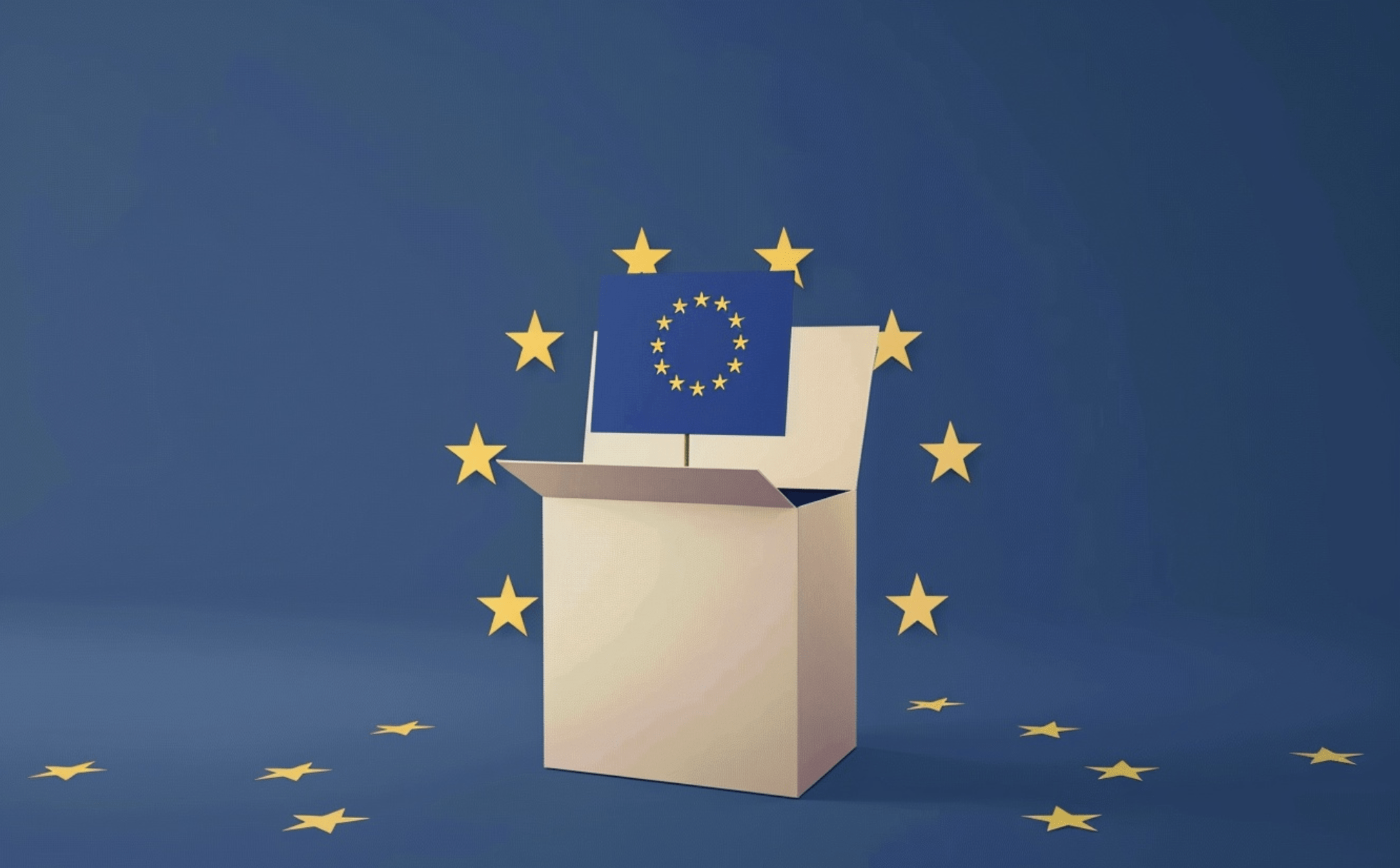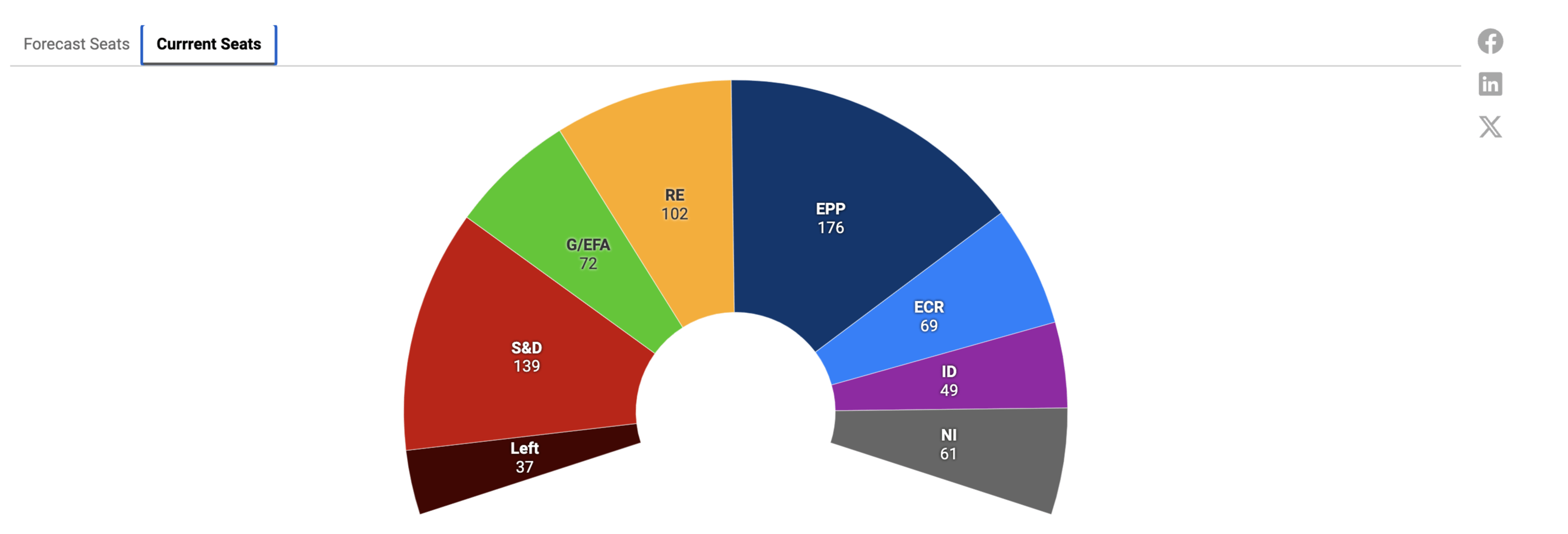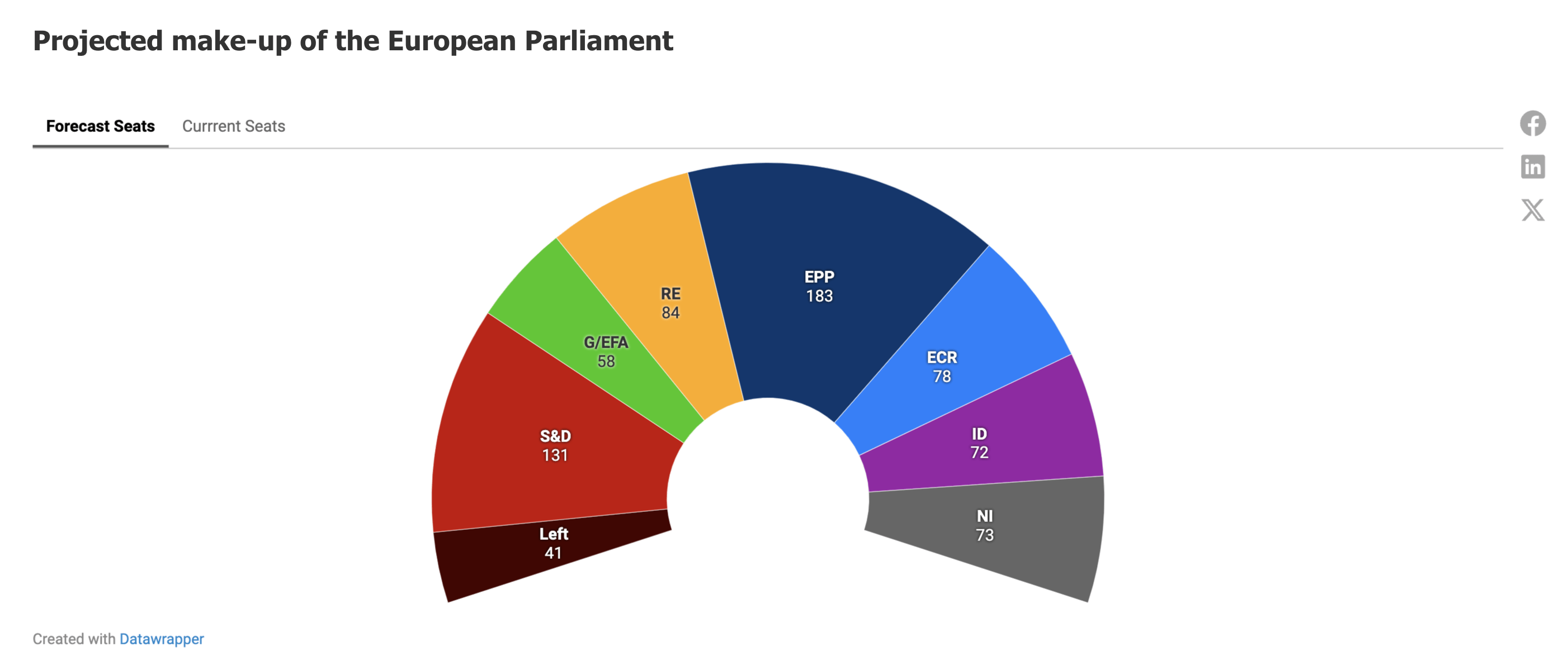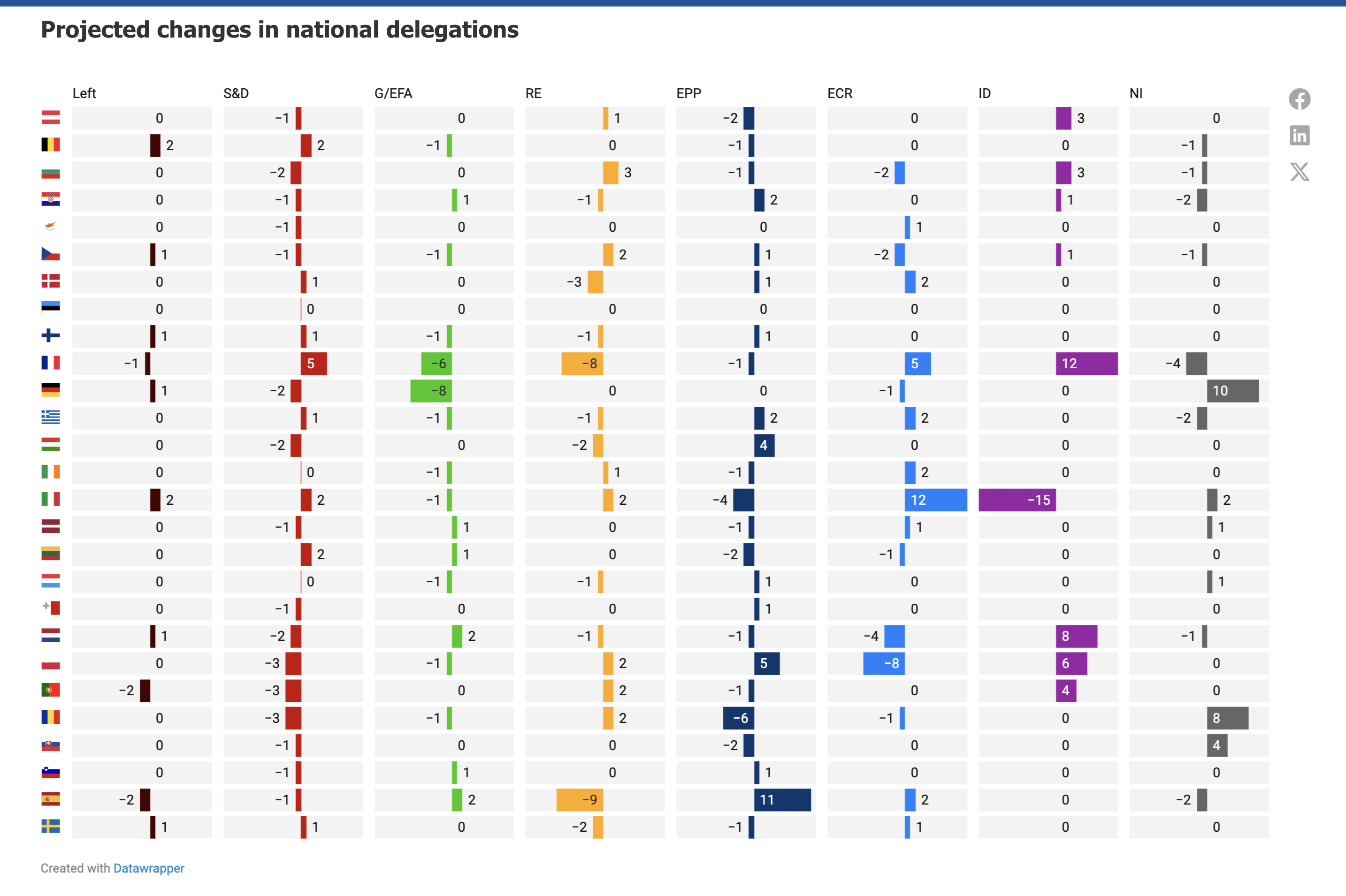Who Will Win the European Parliament Election: The Final Forecast
In our first forecast for the EP 2024 elections based on our model, in January 2024, we predicted a “sharp right turn”. In our latest forecast, and our final one before the election, we are still forecasting that the next EP will be considerably more right-leaning than the current one, and that the two groups to the right of the EPP will be considerably larger than they currently are.

UPDATED: Monday, 3 June 2024
There are two main ways to predict the outcome of European Parliament elections.
First, a “nowcast” takes the current levels of support for national parties in national opinion polls and calculated how many seats each national party would win if a European Parliament election were held today. This approach is adopted by several platforms, such as EuropeElects and Politico.
Second, a “forecast” builds a statistical model to predict the level of national party support at the time of the European Parliament election in June 2024, using a variety of variables, such as national opinion poll standings today, how many votes a party won at the last national election, whether a party is in government or opposition, and the political family of a party.
We use this second approach. We build a model based on the results of the 2014 and 2019 elections, and use the outputs of that model to predict national party vote shares in the 2024 elections, and then turn these vote shares into predicted national party seats, and aggregate those up to the political groups. The Annex, below, explains the model in more detail.
Here are the results of our forecast model for the elections in June 2024, compared to the current composition of the European Parliament. The main changes are:
- Together, the three centrist political groups (EPP, S&D, and RE) will be slightly smaller, although EPP are likely to gain some seats;
- The two groups to the right of EPP (ECR and ID) will be considerably larger, and together could have more seats than S&D;
- The average (median) MEP will move rightwards, and will be a member of EPP rather than RE; and
- Overall, there will be more power in the adoption of EU laws for the groups on the right (EPP, ECR, and ID) than in the current Parliament




If you are interested in the European Parliament activity, please check a new tool that the IEP@BU has just launched, with professors Simon Hix and Abdel Noury: the EPVM - European Parliament Vote Monitor
IEP@BU does not express opinions of its own. The opinions expressed in this publication are those of the authors. Any errors or omissions are the responsibility of the authors.

